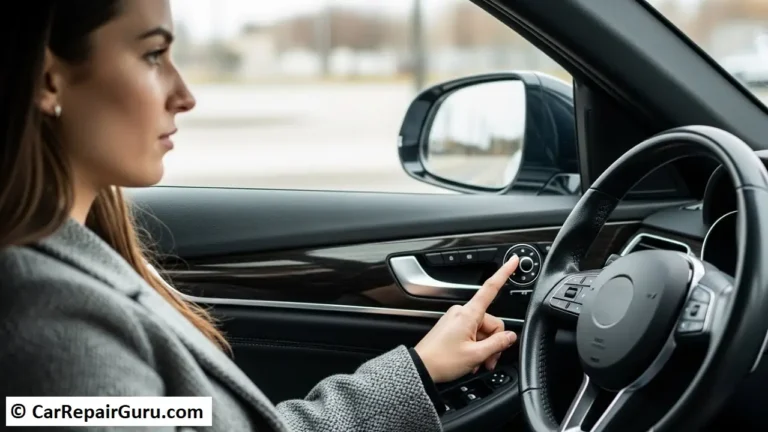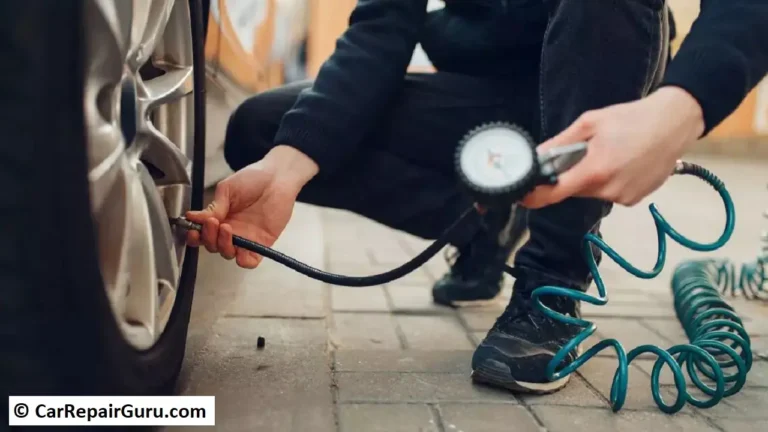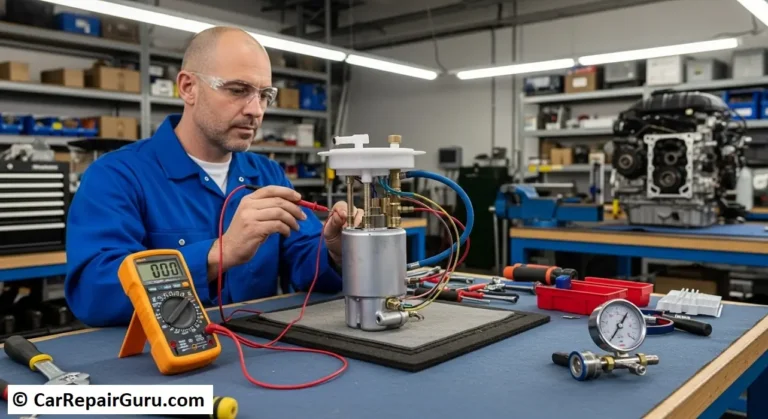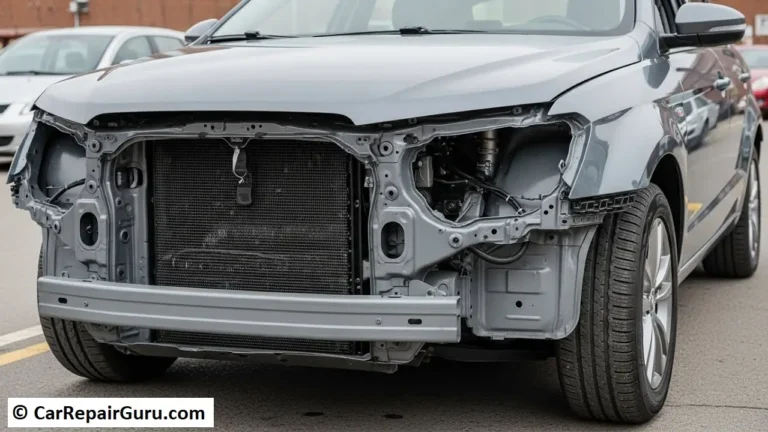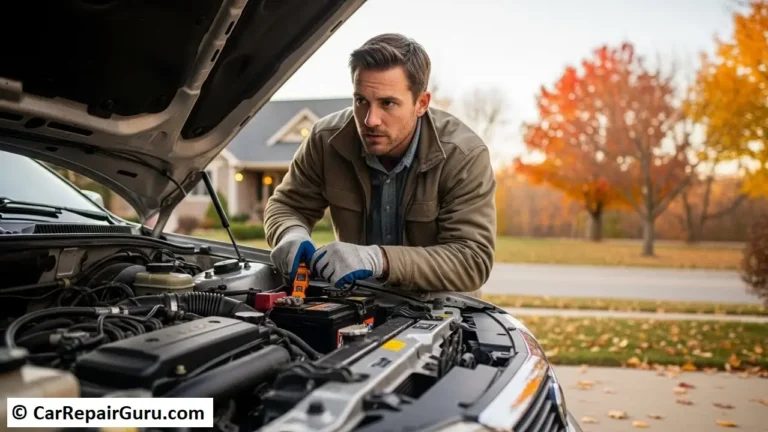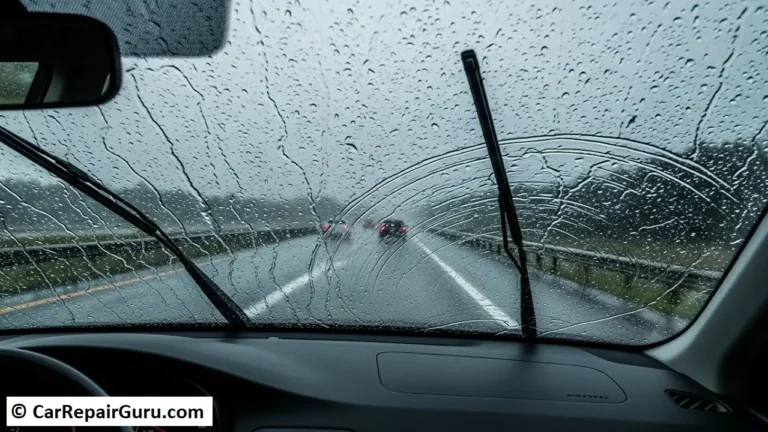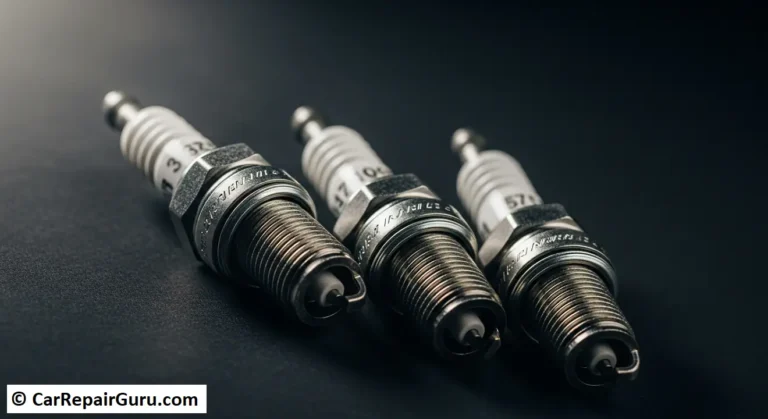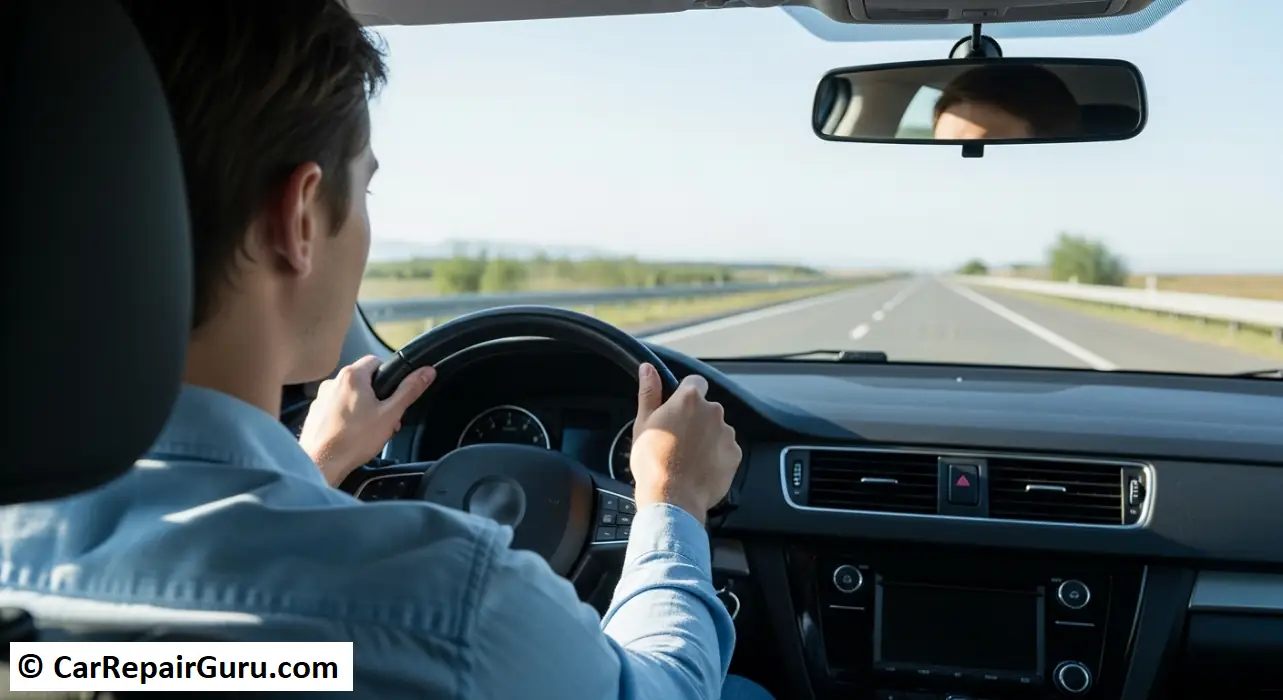
Driving is a daily task for millions, but how many of us actively work on getting better at it after we pass the test? We think of it as a skill we’ve learned, a box we’ve checked. But the truth is, the license is just the beginning of your education. Becoming a truly great driver is a lifelong journey of refining habits, sharpening awareness, and building confidence.
Whether you’re a new driver nervous about the highway, or you’ve been on the road for 20 years and may have developed some bad habits, this guide is for you. We’ll break down how to be a better driver into six key areas: from developing a safe mindset and ensuring your vehicle is ready, to mastering advanced techniques and committing to continuous learning. These are the improving driving skills tips that will make you safer, smoother, and more in control every time you get behind the wheel.
The Mindful Driver – Mastering Awareness & Attitude
Before your hands touch the wheel or your foot touches the pedal, the most important part of driving begins in your mind. A proper mindset is the foundation of road safety.
1. Eliminate All Distractions
This goes far beyond the obvious “don’t text and drive.” In today’s world, distraction is the number one enemy of safe driving habits. A truly skilled driver cultivates a sterile cockpit. This means setting your GPS, choosing your playlist, and finishing your coffee before you put the car in gear. Even hands-free calls are a form of cognitive distraction—your mind is focused on the conversation, not the unpredictable car two lanes over. Make a pact with yourself: when you’re driving, you’re just driving.
2. Practice Proactive Situational Awareness (The 12-Second Scan)
Many drivers only focus on the taillights of the car directly in front of them. Great drivers see the bigger picture. Practice scanning 12 to 15 seconds ahead of your vehicle. In city traffic, that’s about a city block. On the highway, it’s about a quarter-mile. This hazard perception technique allows you to see developing situations before they become emergencies. You’ll notice the ripple effect of brake lights far ahead, the delivery truck preparing to double-park, or the pedestrian waiting to cross the street, giving you ample time to react smoothly instead of suddenly.
3. Adopt a Defensive Driving Mindset
Defensive driving isn’t about being timid; it’s about being smart. The core principle is to operate your vehicle in a way that allows you to avoid collisions despite the actions of others or the presence of adverse conditions. Assume other drivers might not see you. Expect that the car waiting at the intersection might pull out. By anticipating potential mistakes from others, you leave yourself an “out”—an escape path into another lane or onto the shoulder—that can prevent a collision.
4. Master Your Space Cushion (The 3-Second Rule)
Your car’s brakes are powerful, but they can’t defy physics. The single most effective way to prevent a rear-end collision is by maintaining a safe following distance. The “3-Second Rule” is the gold standard. Watch the vehicle ahead of you pass a fixed object (like a sign or an overpass). Then, start counting “one-one thousand, two-one thousand, three-one thousand.” If you reach the object before you finish counting, you are too close. In rain, snow, or when following a large truck, increase that count to four or even five seconds. This space is your buffer—it’s the most critical safety feature you control.
Vehicle Readiness – The Foundation of Safe Driving
You can be the most skilled driver in the world, but if your equipment isn’t up to the task, you’re putting yourself and others at risk. Excellent vehicle control starts with a vehicle that’s ready for the road.
5. Perform a Pre-Drive “WALK” Check
Before you even get in your car, take 15 seconds to perform a quick check. Use the simple acronym WALK:
- W – Windows, Wipers, and Mirrors are clean and clear.
- A – Air in the tires looks correct (no visible flats).
- L – Lights (headlights and taillights) are not broken.
- K – “Kleaks” (Leaks) – glance under the car for any new puddles.
This simple habit can help you spot a flat tire, a broken light, or another issue before it becomes a dangerous problem on the highway.
6. Understand Your Tire’s Health
Your tires are the only part of your car that actually touches the road. Their health is non-negotiable for road safety. First, check your tread depth using the penny test. Place a penny into the tread with Lincoln’s head upside down. If you can see all of his head, your tread is dangerously low and it’s time for new tires. Second, check your tire pressure at least once a month. The correct pressure is listed on a sticker inside your driver’s side door jamb, not on the tire itself. Proper pressure ensures optimal braking, handling, and even fuel economy.
7. Keep Your Vision Clear at All Times
You can’t avoid a hazard you can’t see. Your ability to maintain a clear line of sight is paramount. This means regularly cleaning your windshield on the inside and outside to reduce glare. It means replacing your wiper blades the moment they start to streak, not waiting for the first downpour. And it means keeping your washer fluid reservoir topped up, especially during winter months when roads are salty and grimy.
8. Know Your Dashboard Warning Lights
Those little symbols on your dashboard aren’t decorations. They are your car’s way of communicating a problem. While a “Check Engine” light might not be an immediate emergency, a blinking one is. An Oil Pressure or Battery light demands immediate attention. Take a few minutes to browse your owner’s manual and familiarize yourself with what the most critical lights mean. Ignoring them is a gamble that rarely pays off.
Refining Your Technical Abilities
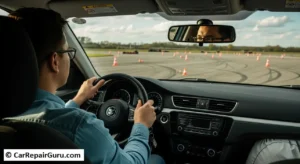
With the right mindset and a ready vehicle, it’s time to focus on the physical act of driving. These are the skills that separate an average driver from a smooth, confident, and capable one.
9. Perfect Smooth Steering, Braking, and Acceleration
Jerky movements are a sign of an amateur driver. They upset the balance of the car, reduce vehicle control, wear out components faster, and are uncomfortable for passengers. Practice applying gentle, steady pressure to both the accelerator and the brake. When turning, use smooth hand-over-hand or push-pull steering motions rather than shuffling the wheel. The goal is to make every transition—from accelerating to braking to turning—feel like one seamless, fluid motion.
10. Conquer Parking (Especially Parallel & Reverse)
Nothing screams “lack of confidence” like a 10-point turn to get into a simple parking spot. If parking makes you anxious, you’re not alone. The solution is simple: practice. Find a large, empty parking lot and set up some cones or cardboard boxes. Practice backing into a space until you intuitively understand your car’s pivot point. Look up a tutorial on parallel parking and follow the steps over and over. Mastering parking will do wonders to improve driving confidence.
11. Know Your Vehicle’s Features and Limits
Do you know what it feels like when your Anti-lock Braking System (ABS) engages? It’s a rapid pulsing under your foot. Do you know how your traction control works? Understanding these safety systems helps you use them effectively. Before you get on the road, take the time to properly adjust your seat, steering wheel, and mirrors. Your seat should be positioned so you can fully depress the brake pedal with a slight bend in your knee. Your side mirrors should be set so you can just barely see the side of your own car. This small adjustment dramatically reduces your blind spots.
12. Make the Shoulder Check a Reflex
Mirrors lie. They offer a great view of what’s behind and beside you, but they can’t cover everything. The blind spot is a real and dangerous area where a car, and especially a motorcycle, can hide. Before every single lane change, merge, or turn, you must perform a physical head turn to check your blind spot. It should be a quick, reflexive glance over your shoulder. Don’t rely on technology like blind-spot monitors alone—they are an aid, not a replacement for this critical safe driving habit.
Navigating the Social Road – Interacting Safely with Others
Driving is a communal activity. Your actions directly impact everyone around you. Becoming a better driver means becoming a better road-sharing citizen.
13. Become Predictable: The Power of Proper Signaling
Your turn signal is your primary communication tool. It tells other drivers your intentions, allowing everyone to coordinate their movements safely. The key is to use it correctly: signal before you start braking to slow down for the turn. This gives the driver behind you advance warning. After you complete your maneuver, double-check that your signal has canceled. A forgotten, blinking signal is confusing and unpredictable, which is the last thing you want to be on the road.
14. Give Trucks and Buses Extra Space
Large commercial vehicles are the titans of the road and must be treated with respect and caution. They have enormous blind spots—called “No-Zones”—on all four sides. A good rule of thumb is that if you can’t see the truck driver’s face in their side mirror, they can’t see you. They also require a much longer distance to stop and make very wide turns. Never cut in front of a truck and then slam on your brakes. Always give them extra room.
15. See and Be Seen by Vulnerable Road Users (VRUs)
You aren’t just sharing the road with other cars. You are sharing it with motorcyclists, cyclists, and pedestrians—Vulnerable Road Users. Their safety is largely your responsibility. Actively look for them. At intersections, look left, right, and then left again before proceeding. Make eye contact with pedestrians waiting to cross. When passing a cyclist, give them at least three feet of space. Remember that a motorcycle can be easily hidden in a car’s blind spot, so look twice before changing lanes.
16. Master the “Dutch Reach”
This is one of the best advanced driving techniques you can learn to protect cyclists. When you’re parked on the side of a road and about to open your door, reach for the handle with your far hand (your right hand if you’re the driver). This simple action forces your body to turn, making you automatically look over your shoulder and into your side mirror. It’s an almost foolproof way to spot an approaching cyclist or car and prevent a dangerous “dooring” incident.
Advanced Techniques for Challenging Situations
The fundamentals will keep you safe 99% of the time. These advanced skills will help you handle that other 1%, when conditions are less than ideal.
17. Learn to Drive in Adverse Weather
Weather changes everything. When it’s raining, the road is slick and visibility is reduced. Slow down, double your following distance, and avoid using cruise control. If you feel the car hydroplane (riding on a layer of water), do not brake or turn. Ease your foot off the accelerator and keep the steering wheel straight. In snow and ice, every input must be gentle. Accelerate slowly, brake softly, and steer smoothly.
18. Master Highway and Interstate Driving
Highway driving requires a unique set of skills. When merging, use the full length of the on-ramp to get your vehicle up to the speed of traffic before you merge. It’s much more dangerous to merge at a slow speed. When changing lanes, signal, check your mirrors, check your blind spot, and then move over smoothly. On long drives, be aware of “highway hypnosis”—a trance-like state. To combat it, keep your eyes moving, scan your mirrors, and take a break every two hours.
19. Know How to Handle a Skid (Oversteer vs. Understeer)
A skid can be terrifying, but the correct reaction can save you. The most important rule is to look and steer where you want to go. If the back of your car is sliding out (oversteer), steer gently in the direction of the slide. If the front of your car is plowing forward and not turning (understeer), ease off the accelerator and apply gentle, steady braking. In both cases, resist the instinct to slam on the brakes, as this will likely lock the wheels and make the skid worse.
20. Practice and Adapt to Night Driving
Driving at night is statistically more dangerous. Your depth perception is reduced and hazards are harder to see. To stay safe, ensure your headlights are clean and aimed correctly. Dim your dashboard lights to improve your night vision. Avoid looking directly at the headlights of oncoming traffic; instead, look toward the white line on the right edge of the road to guide you.
Committing to Lifelong Improvement

The best drivers never assume they know it all. They remain students of the road for life.
21. Take an Advanced or Defensive Driving Course
No matter how long you’ve been driving, a professional course can make you better. A defensive driving course will reinforce safe habits and may even get you an insurance discount. An advanced driving or car control clinic will teach you skills you can’t learn anywhere else, like skid control and emergency braking techniques in a safe, controlled environment. It is one of the single best investments you can make in your driving career.
22. Regularly Review the Rules of the Road
Do you remember the specific rule for a four-way stop? Or when you’re legally required to turn on your headlights? Traffic laws can be updated, and it’s easy to forget the finer points over time. Taking 15 minutes once a year to look up your local DMV’s driver handbook is a fantastic way to refresh your knowledge and ensure you’re still following the law.
23. Seek Feedback from a Calm, Experienced Driver
Ask a trusted, calm friend or family member—someone who is a genuinely good driver—to ride with you. Ask them to give you honest, constructive feedback on your driving. They might notice a bad habit you’re not even aware of, like following too closely, braking too late, or forgetting to check your blind spot. A fresh set of eyes can be an invaluable tool for improving your driving skills.
Your Journey to Becoming a Better Driver
Becoming a better driver doesn’t happen overnight. It’s the result of conscious effort and a commitment to building good habits. You now have 23 ways to improve your driving. Don’t try to master them all at once. Pick one or two this week—like performing a pre-drive “WALK” check or practicing the 3-second rule—and focus on making it a habit. Every small improvement makes the road safer for everyone.
What’s the #1 driving tip that has helped you the most? Share it in the comments below
Frequently Asked Questions About Driving Skills
What is the most important skill for a driver?
Without a doubt, the most important skill is situational awareness. The ability to see, process, and react to potential hazards before they become critical is the very essence of safe, defensive driving. Speed and reflexes are useless if you don’t see the danger coming in the first place.
How can I improve my driving confidence?
Confidence comes from competence. The best way to improve driving confidence is through low-stakes practice. If you’re nervous on the highway, try driving on it early on a Sunday morning when traffic is light. If you’re scared of parking, spend 30 minutes in an empty lot. Start small, master one skill at a time, and your confidence will build naturally.
Are advanced driving courses worth it?
Absolutely. Basic driver’s ed teaches you how to pass the test. An advanced or defensive driving course teaches you how to survive a real-world emergency. Learning how your car behaves at its limit in a safe environment is an invaluable experience that could save your life one day.
How do I stop being a nervous driver?
First, acknowledge that it’s okay to be nervous. Driving is a complex task. Address the root cause by building your skills. Start with short, familiar routes. Practice deep breathing exercises before you get in the car. Make sure the car is comfortable and everything is adjusted properly. As your skills improve through deliberate practice, your anxiety will decrease.
